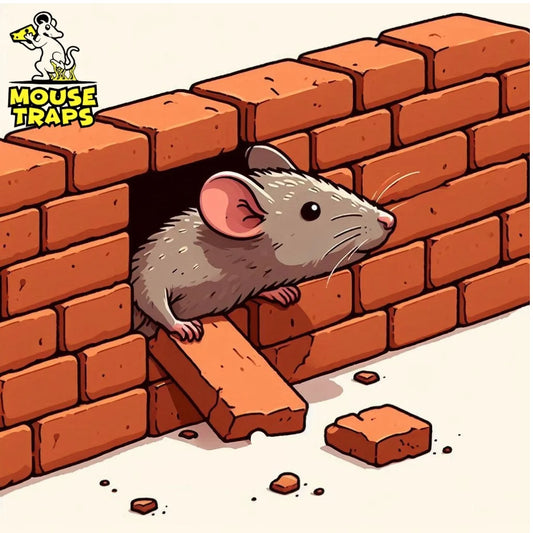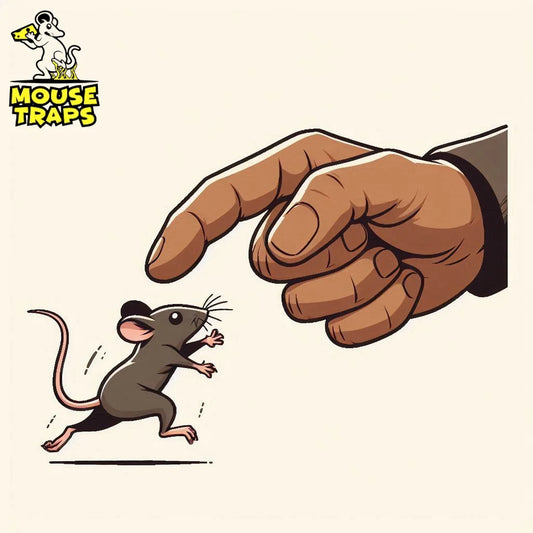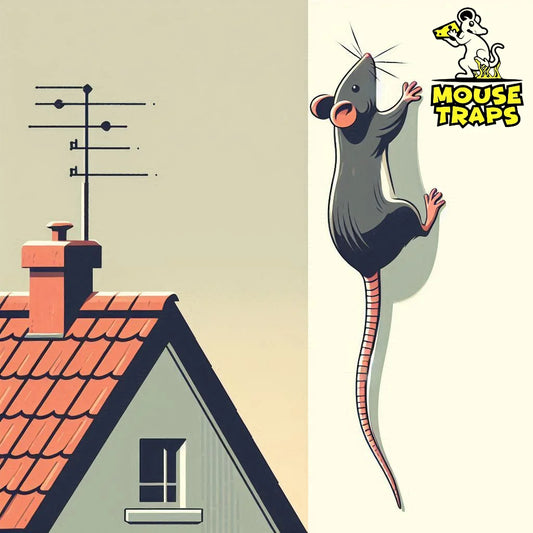Introduction:
Searching for a way to deter rats from digging up the garden? Don't worry! we've got you covered. Although, deterring rats from digging up your garden can be challenging, but here are some strategies you can try, or you can use traps to avoid potential rat infestation:
Precautions Strategies:
1-Remove food sources: Rats are attracted to gardens because of the food available. Make sure to clean up any fallen fruits or vegetables, avoid overripe produce, and keep garbage bins tightly sealed.
2-Secure compost piles: Compost piles can be attractive to rats because of the organic material. Use a secure compost bin with a lid to prevent rats from accessing it.

3-Eliminate hiding spots: Rats like to hide in overgrown vegetation, piles of debris, or clutter. Keep your garden tidy and remove any potential hiding spots.

4-Use natural deterrents: Some plants and smells are unpleasant to rats. Planting mint, lavender, or marigolds around the garden may help deter them. Additionally, placing strong-smelling items like garlic or peppermint oil-soaked cotton balls around the garden perimeter can be effective.

5-Install barriers: Physical barriers can prevent rats from accessing the garden. Use wire mesh or hardware cloth to cover the soil around plants, and bury it several inches deep to deter digging.

Other Methods:
-
Use repellents: There are commercial rat repellents available that can be applied to the garden soil or sprayed around the perimeter. These products usually contain natural ingredients that are unpleasant to rats.
-
Keep pets or predators around: Cats and some breeds of dogs are natural predators of rats and can help keep them away from the garden. If you have pets, allow them access to the garden area.
-
Maintain cleanliness: Regularly clean up any spilled birdseed or pet food in the garden, as these can attract rats.
-
Monitor and act quickly: Keep an eye on your garden for signs of rat activity, such as burrows, droppings, or chewed plants. If you notice any signs, take action promptly to prevent the problem from escalating.
By combining several of these strategies, you can effectively deter rats from digging up your garden and minimize damage to your plants.
Use Of Traps To Get Rid Of Rats:
1-Live Mouse Traps:
A live humane trap is designed to capture rodents without harming them. These traps typically consist of a cage or box with a trigger mechanism that closes the door once the rat enters.

Benefits:
- Humane: Live mouse traps capture mice without harming them, allowing you to release them elsewhere.
- Reusable: Most live traps are reusable, making them a cost-effective solution in the long term.
- Safe: Live traps are safer to use around children and pets compared to traps that use poisons or snap mechanisms.
- Environmentally friendly: Since live traps don't involve the use of chemicals or toxins, they have minimal environmental impact.
Method of Use:
- Choose the right trap: Select a live trap appropriate for the size of mice you're dealing with. There are various designs available, but they typically involve a small enclosure with a door that closes once the mouse enters.
- Bait the trap: Place bait such as peanut butter, cheese, or seeds at the back of the trap. This will attract the mice to enter.
- Set the trap: Follow the manufacturer's instructions to set the trap. Typically, this involves pulling back a spring-loaded door and securing it in place until triggered.
- Place the trap strategically: Put the trap in areas where mice are likely to travel, such as along walls or near entry points.
- Check the trap regularly: Check the trap frequently, ideally at least once a day, to see if it has caught any mice.
- Release captured mice: Once you've caught a mouse, take the trap to a suitable release location at least a few miles away from your home. Open the trap and allow the mouse to exit.
Sticky Glue Traps:
Sticky glue traps are flat surfaces coated with a strong adhesive. When a rat steps onto the trap, it becomes stuck and unable to escape.

Benefits:
- Easy to use: Sticky glue traps are simple to set up and require no baiting.
- Non-toxic: Sticky traps do not involve the use of poisons or chemicals, making them safer for use around children and pets.
- Disposable: Sticky traps are typically disposable, so there's no need to handle captured mice directly.
Method of Use:
- Place the trap: Simply peel off the protective covering on the glue trap and place it along walls or in areas where mice are active.
- Monitor the trap: Check the trap regularly to see if it has captured any mice.
- Dispose of captured mice: Once a mouse is caught, carefully dispose of the entire trap, mouse and all. Some traps come with instructions for safe disposal.




